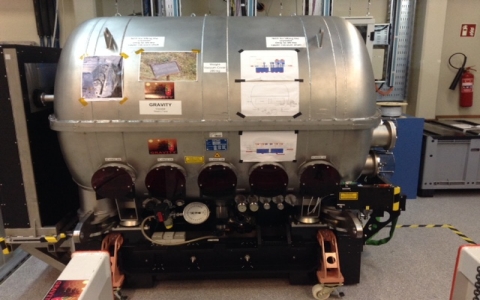Gravity Overview
Introduction
GRAVITY is the first second generation instrument for the VLT interferometer. At its heart, the instrument combines the light of four telescopes and produces interferometric fringes in two seperate interferometers, the science and the fringe-tracking channel. The instrument was offered to the community for regular science programs in P98 for the first time. Science verification was successfully performed in P97 (see the corresponding SV page). GRAVITY works for so-called imaging observations as well as for high-precision astrometric observations by means of phase referencing. GRAVITY observations are always performed in conjunction with the dedicated GRAVITY fringe-tracker (FT); observations without FT are not possible. The FT can be used in 'single-field' mode in which FT star and science star are the same, or in 'dual-field' mode, where the fringe tracker and the science channels are fed by different objects. The dual-field FT case allows for observations of faint targets that are accompanied by relatively bright objects with a separation of up to 30".
Reference
Publications based on GRAVITY observations should cite the following reference paper: Gravity Collaboration 2017, A&A, 602, 94

Spectral settings
GRAVITY operates in the K-band and is offered in three different spectral setting, viz. low resolution (R~20), medium resolution (R~500) and high resolution (R~4000). The low resolution mode is only offered in dual-field mode, because the dispersed fringe-tracker data also have a resolution of approximately 20 and are delivered to the user together with the science data. Note that the full K-band (1.98 to 2.40 micron) is delivered by each spectral setting.
Detector integration times
The fringe-tracker provides reliable group delay and phase delay tracking and thus allows for integration times on the science of up to 100 seconds under good coherence time and seeing conditions. This stability allows for background limited observations in the K-band.
Execution times
The policy on execution times is similar to the other VLTI instruments with standard slots of 1h which include a calibrator and a science observation. The GRAVITY ETC is available and provides visibility calculations and feasibility calculations for an observation with a given target geometry, magnitude, and baseline configuration.
Further Information
More information can be found on these pages, in the GRAVITY user manual and GRAVITY template manual.
Contacts
Contact addresses related to the GRAVITY operations team can be found on this webpage.
